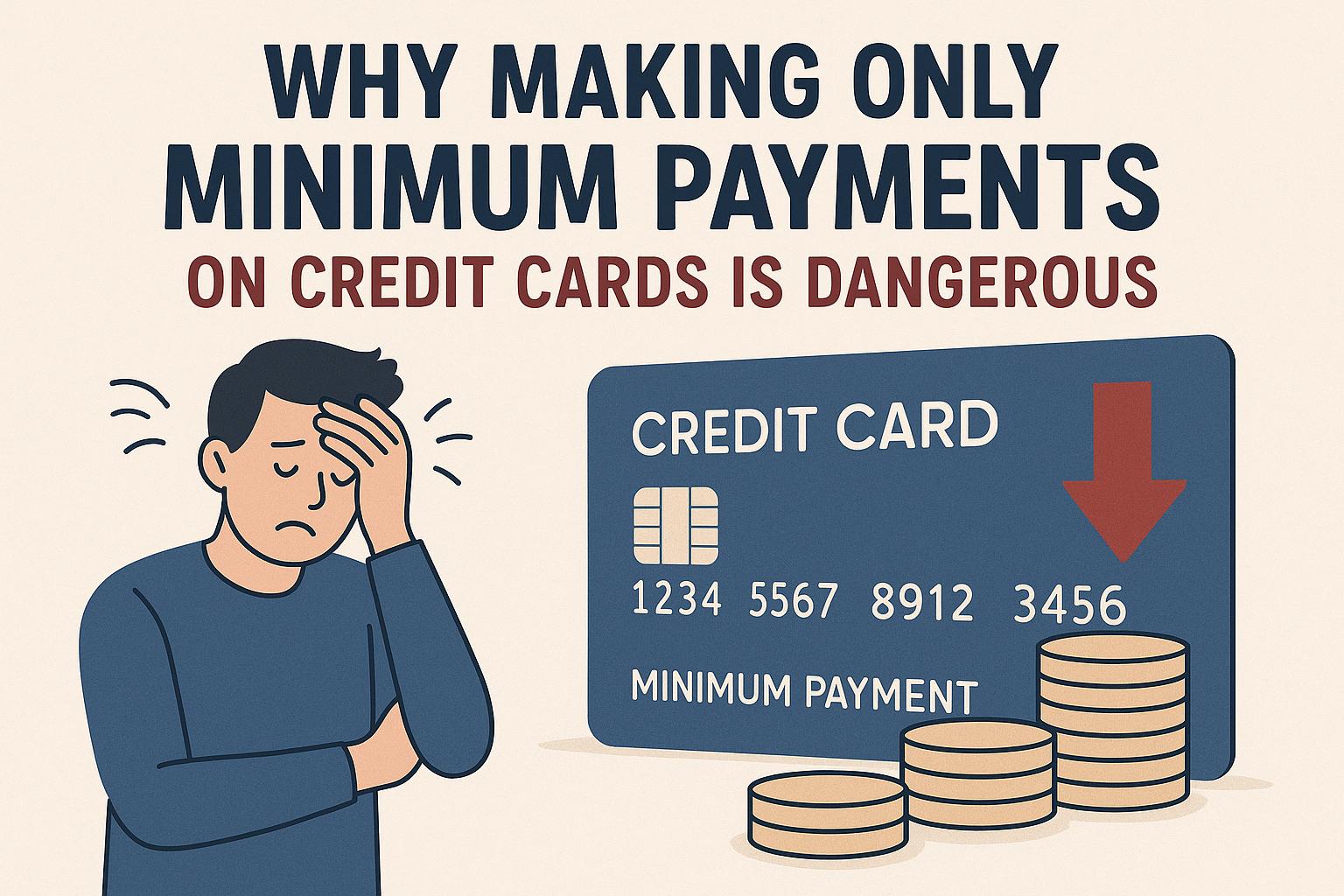The Risks of Making Only Minimum Payments on Credit Cards
Understanding the various strategies for managing credit card debt is crucial for maintaining financial health. Among these strategies, the choice of making only the minimum payments each month often appears attractive, especially when faced with tight budgeting constraints. However, this approach is fraught with hidden risks that can severely impact your financial well-being over time.
Compounding Interest
One of the most significant drawbacks of paying only the minimum amount due each month on your credit card is the influence of compounding interest. Credit card companies typically calculate interest on a daily basis against the outstanding balance. Consequently, when you opt to make only the minimum payment, most of your payment goes towards covering the interest, leaving a minimal amount to reduce the principal balance. This not only prolongs the repayment process but also results in the accumulation of interest on the unpaid balance, leading to increased overall charges.
Long-Term Debt Burden
The decision to rely on minimum payments can entrench individuals in a prolonged debt cycle. With each payment covering mostly the interest and only a small portion of the principal, it can take several years to clear the debt fully, a timeframe that could extend to decades in some cases. This extended repayment period imposes financial limitations, reducing the capacity to save and invest in other areas. It ties up financial resources that could be used for more productive financial goals.
Increased Financial Costs
The cumulative effect of interest payments over time can result in significantly higher costs than initially anticipated. The extra burden of these charges can substantially diminish financial resources, impacting potential savings negatively. Ultimately, by settling for minimum payments, individuals end up paying considerably more for each purchase than its original price, adding to the financial strain.
Impact on Credit Scores
While meeting minimum payments on time does shield cardholders from penalties and late fees, it has little influence on improving one’s credit utilization ratio. This ratio, indicating the proportion of credit one uses relative to the overall credit limit, is a critical component in determining one’s credit score. Maintaining a high credit utilization can adversely affect creditworthiness, posing challenges in securing loans or obtaining favorable interest rates, thus restricting financial opportunities.
Opportunity Costs
Another significant disadvantage of adhering to minimum payments is the presence of opportunity costs. Funds that are primarily used to repay compounding interest could instead be directed towards more effective financial pursuits, such as investing in retirement accounts or building an emergency fund. By adopting a more aggressive approach to reducing credit card debt, individuals can liberate resources to support these constructive financial strategies, enhancing overall financial security.
Strategies to Avoid Minimum Payments
Mitigating the financial risks associated with minimum payments necessitates adopting more robust repayment strategies. Developing a comprehensive budget is an essential step towards allocating additional funds to diminish credit card balances more efficiently. One effective approach is setting up automatic payments that exceed the minimum requirement, ensuring consistent progress in reducing debt.
Moreover, individuals can explore transferring existing balances to credit cards that offer lower interest rates. This strategy can alleviate the interest burden, enabling more significant reductions in the principal balance over time. As such, evaluating different repayment methods can be instrumental in lessening financial strain and achieving greater financial freedom.
To summarize, making only the minimum payments on credit card debt is fraught with long-term, adverse consequences. These include enduring prolonged debt cycles, incurring elevated financial costs, and suffering potential damage to credit scores. Furthermore, the high opportunity costs of this strategy can hinder the achievement of broader financial goals. Recognizing and addressing these risks is vital for fostering a more stable and secure financial future. By employing strategic repayment approaches, handling credit card debt can become a more manageable, less burdensome task. Understanding and implementing these strategies early on can significantly enhance one’s ability to maintain a sound financial standing.
The pathway to financial stability begins with informed decisions about debt management. Given the pitfalls associated with minimum credit card payments, it is essential to prioritize methods that facilitate debt reduction and preserve financial resources. By breaking the cycle of minimum payments, individuals can unlock the potential for broader financial opportunities and enjoy enhanced financial resilience over the long term. Evaluating personal financial situations and making deliberate choices can empower individuals to navigate the complexities of credit responsibly, improving their financial outlook substantially.
This article was last updated on: October 9, 2025


